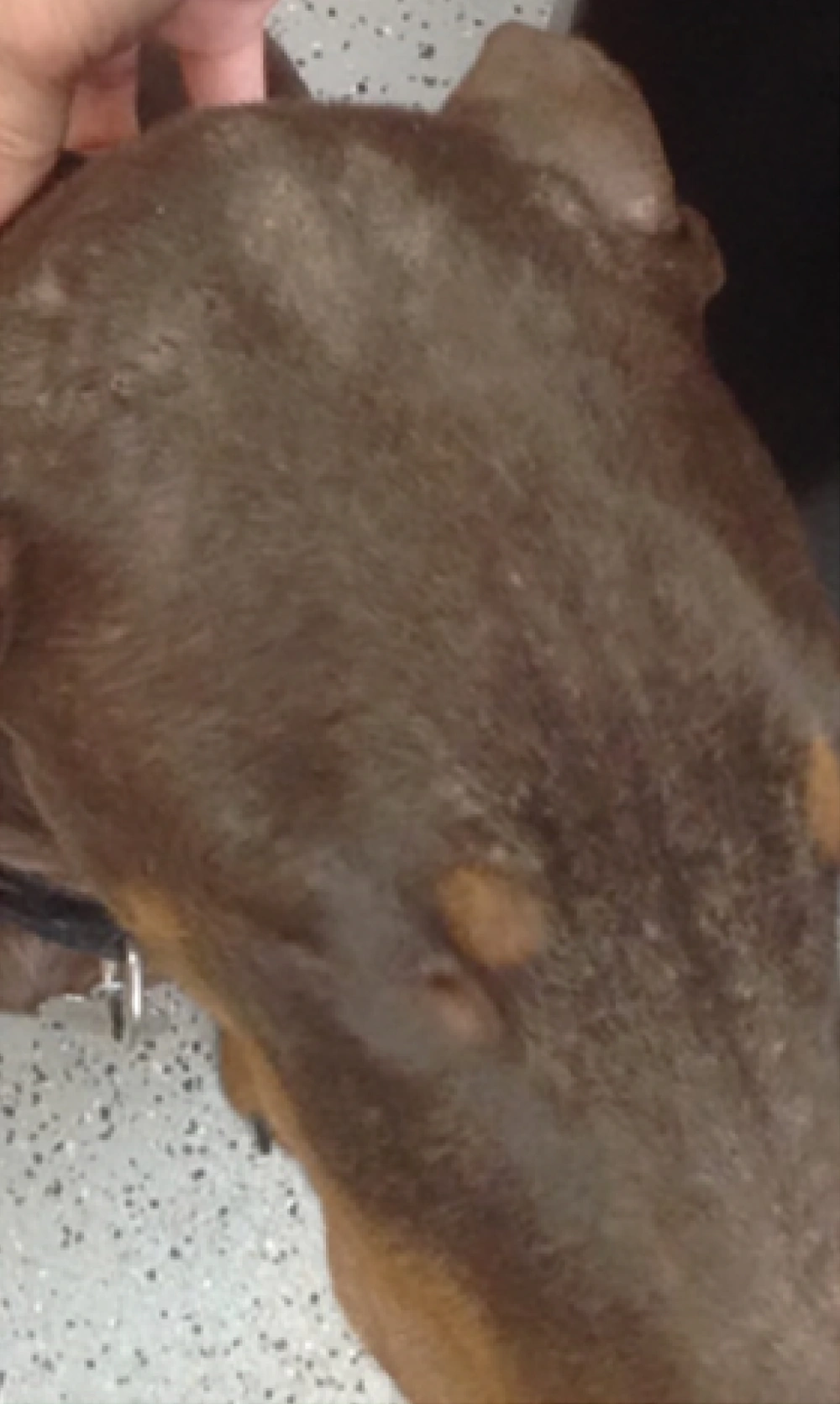
by Dr. Cliff Faver
Photos provided by Dr. Cliff Faver
 here are many different mites that can cause “mange,” and it is very important that we understand the difference to be able to deal with them effectively. Demodectic mange, sometimes referred to as “red mange,” is probably one of the more common mites that we encounter, which is caused by demodex mites.
here are many different mites that can cause “mange,” and it is very important that we understand the difference to be able to deal with them effectively. Demodectic mange, sometimes referred to as “red mange,” is probably one of the more common mites that we encounter, which is caused by demodex mites.
It is speculated that the infants of different animals pick up the mites from their mothers during nursing, as the most common areas affected tend to be the face and paws, although they can be found anywhere on the body. The mites actually live down in the follicles, and it is believed they live off the sebum located in the follicles and sebaceous glands.


Symptoms & Hosts
The most common age we see demodectic mange is in puppies from about 3-18 months. The reason for this is that the immune system is just developing. As the pet ages, its immune system will eventually be able to control the overgrowth of these mites.
If demodex mites are seen in older dogs, we need to be concerned that the pet’s immune system may be compromised in some way. Commonly, we will see this in pets that are fighting off some other disease process that is not allowing the body to keep the mites in check or fight them off.
The mites are considered to have a symbiotic (mutually beneficial) relationship with the pets. They may play an essential role in cleaning up dead cells and debris since they live off the sebum of the follicle. They do not survive very long outside the follicle, but can thrive within the follicle.
The mites themselves have a cigar shape and have noticeable legs that are commonly active when looked at under a microscope (using oil prep and slide cover). Seeing any mites is significant, but more mites and activity indicate that there is an overgrowth scenario. It’s not uncommon to see 10-15 per high-powered field.
Some cases of demodectic mange, if localized and in young puppies, are self-limiting. As the immune system develops, the mites tend to decrease in numbers. Other times, we have a more generalized infection. Or, if it is with an immunocompromised (poor immune system) pet, they are more involved and need to be treated.

It is essential to know that when you use any of these products, as the mites die, it can cause an increased inflammatory process as the body breaks down the dead mites. In other words, they often get worse before they get better.
Many of these pets will have secondary infections, which will also need to be dealt with, along with rebuilding the skin barrier, especially if harsh topical products are used. Pyoben and benzoyl peroxide shampoos are commonly used in conjunction with topical treatments with the intention of helping to clean out the follicle. However, they are also very drying, which can hinder the healing and rebuilding of the skin barrier process.
Many of these dogs will go undiagnosed, however. If you are seeing puppies (6-18 months) that have an itchy skin condition, the two major rule-outs are dry skin and demodectic mange. Allergies usually don’t develop until a little later in age.
Using a very mild sulfur product can be particularly helpful because it serves multiple purposes: it is anti-parasitic, anti-fungal (and yeast) and offers benefits against bacteria. When in doubt, consult a veterinarian, or they will consult with you to help in the process.
Having the knowledge of what is involved in taking care of skin issues and recognizing them early makes a big difference. Treating pets with mites can be very rewarding and is reasonably straightforward when you know what is needed. Always remember, this is a process, not just a product.
Dr. Cliff Faver graduated with a BS in Biology/BA in Chemistry before getting a Veterinary degree in 1987. He is the past owner of Animal Health Services in Cave Creek, Arizona and now the US distributor for Iv San Bernard products, teaches the ISB Pet Aesthetician Certification program, and speaks internationally on hair and skin. His passion is to merge groomers and veterinarians to aid in helping and healing pets. He is also a member of AVMA, AAHA, AZVMA, Board member with Burbank Kennel Club, and has served on Novartis Lead Committee, Hill’s International Global Veterinary Board, and a Veterinary Management Group.


